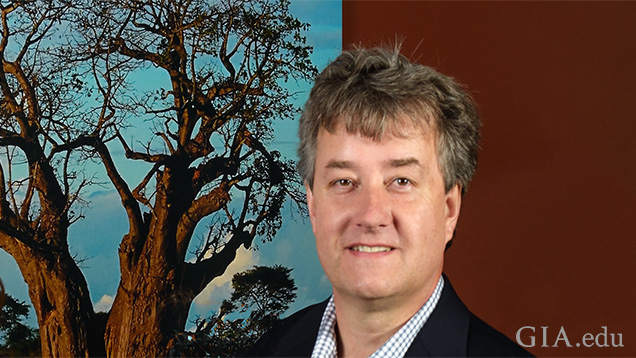Pinctada maxima Pearls from Operated Mollusks, Sudoite in Ceramic-Age Caribbean Jewelry, Persian Turquoise Field Report, and More

We invite you to cozy up with the new Fall edition of G&G! Travel to Western Australia as we continue the series on Pinctada maxima pearls, this time with a focus on cultured pearls harvested directly from operated marine mollusks. Then let two historical articles transport you back in time with the discovery of Ceramic-Age objects fashioned from sudoite in the Lesser Antilles and a look at the state of Iran’s Neyshabur turquoise mine, the source of treasures dating back to the Neolithic period.
“An examination of lapidary craft from five archaeological excavations in the French West Indies has revealed the use of a rare gem material: sudoite.”
This issue opens with part two in a three-part series on Pinctada maxima pearls. Artitaya Homkrajae and fellow GIA researchers investigate the internal structures of 86 saltwater cultured pearls collected directly from operated mollusks off the coast of Western Australia. Real-time microradiography and X-ray computed microtomography revealed several broad growth structural types, some of which may overlap with their natural counterparts. This study illustrates some of the challenges laboratories face, as the distinction between non-bead cultured and natural pearls is not always clear.
An examination of lapidary craft from five archaeological excavations in the French West Indies has revealed the use of a rare gem material: sudoite. In the second article of this issue, Alain Queffelec and coauthors provide a mineralogical and geological analysis of nine sudoite objects to understand the provenance of the material and the trade networks of Amerindian cultures from the Early Ceramic period.
Next, Philippe Belley and Aaron Palke compare trace element chemistry and visible light absorption spectra of two purple gem spinels from Luc Yen, Vietnam, and Badakhshan, Afghanistan. Their study presents the first reported example of a saturated purple color in spinel attributed to chromium and cobalt.
Historically, the Neyshabur mine has produced the majority of Iranian turquoise, which possesses a unique color and quality and has been prized by civilizations dating back to the Neolithic period. In this field report, Bahareh Shirdam and coauthors uncover the current state of the Neyshabur mine and document the different techniques used to extract this vivid blue to green gem turquoise.
Highlights from the Lab Notes section include a unique emerald cabochon with two distinct chatoyant bands, the creative use of manufactured glass to imitate star sapphire, and zircon with unusual color-change behavior when viewed under different illuminants. Explore the inner beauty of gemstones with the Micro-World section, featuring a stunning apatite crystal floating over a cloud of silk in a star sapphire, a diamond with an octahedral-shaped cloud inclusion resembling a six-pointed star, and hematite reminiscent of a blossoming rose in aquamarine. In Gem News International, you’ll find a study on mabe pearl cultivation in the French territory of Mayotte, as well as a report on Fura Gems’ inaugural auction for rough untreated Mozambican rubies, and much more.
We hope you enjoy the latest issue of Gems & Gemology!



